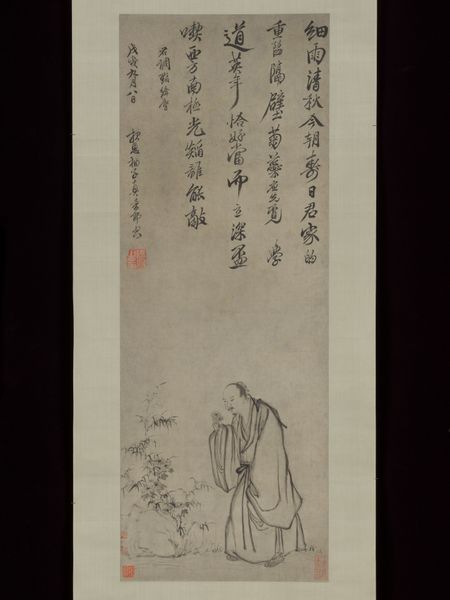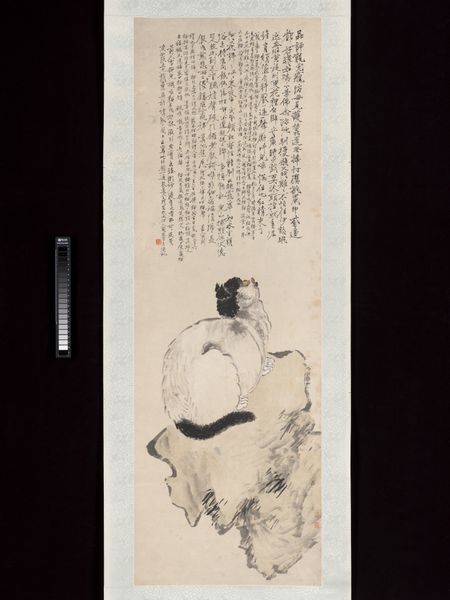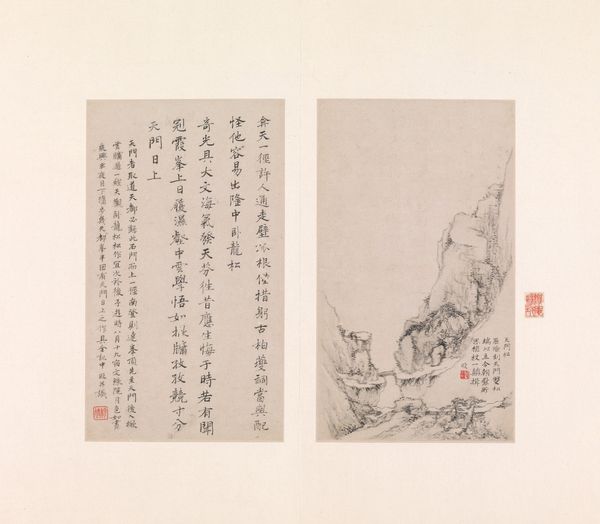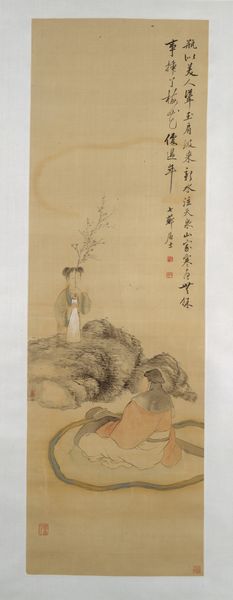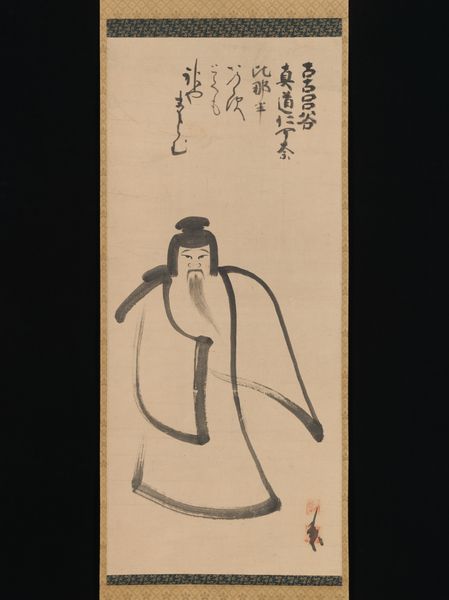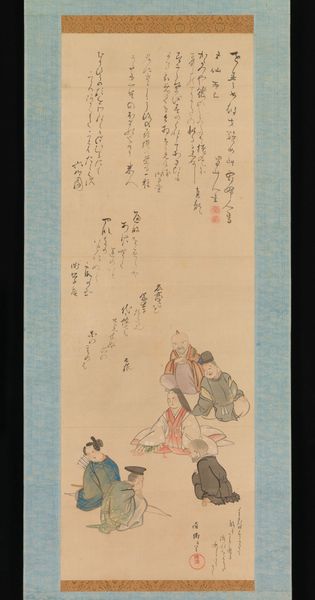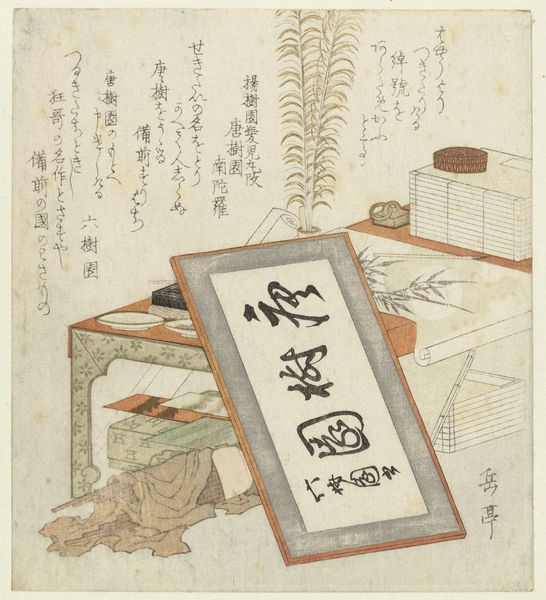
drawing, color-on-silk, hanging-scroll, ink
#
portrait
#
drawing
#
color-on-silk
#
asian-art
#
figuration
#
hanging-scroll
#
ink
#
china
#
calligraphy
Dimensions: 52 x 22 in. (132.08 x 55.88 cm) (image)
Copyright: Public Domain
Curator: Let's discuss this fascinating "Portrait of Buddha," of unknown date, attributed to Wang Zhen, a striking hanging scroll presented in ink and color on silk. The artwork resides here at the Minneapolis Institute of Art. I'm curious about your first impression. Editor: Well, immediately, I’m drawn to the tangible contrast. Look at how the artist renders the figure: soft, almost smudged application of the reddish color, especially in the robe, but surrounding it are crisp lines of dynamic calligraphic text and minimal definition of the support it sits upon. The production involved a real mastery of different techniques with simple means. Curator: It's essential to acknowledge the context of portraits in Buddhist traditions. Representation often blurs the line between mortal figures and transcendent ideals. Wang Zhen uses the art to participate and promote conversations about spiritual authority, using figuration as an expression of those complex ideological concepts. How does that interplay with materiality here? Editor: The choice of silk, in conjunction with the ink, implies an effort to fuse craft and devotional practice. Also, considering the labor required to grind ink, prepare the silk, the embodied work comes across in viewing this object; It serves not only to transmit image but values regarding mindful activity. Curator: Exactly! The text woven within—its very placement and prominence—demands an exploration of language and symbolism, as social actions. Who might have commissioned a piece like this, and how would the artwork participate in cultural or religious events during the artist’s life? Editor: The state of the color pigments—their fragility—reminds me that the work now stands divorced from those original environments of ritual consumption. The pigments suggest impermanence. It speaks to broader commentary about consumerism and materiality through the lens of loss. Curator: Thank you, this has really widened my view of the cultural values present in Wang Zhen’s “Portrait of Buddha,” prompting conversations about access, labor and the life cycles of meaning embedded within art production. Editor: I agree. Understanding how the choice of material, the work process and historical use is integral to understanding the portrait.
Comments
No comments
Be the first to comment and join the conversation on the ultimate creative platform.
